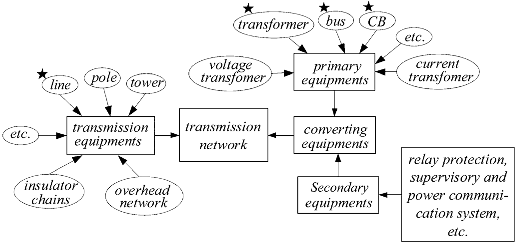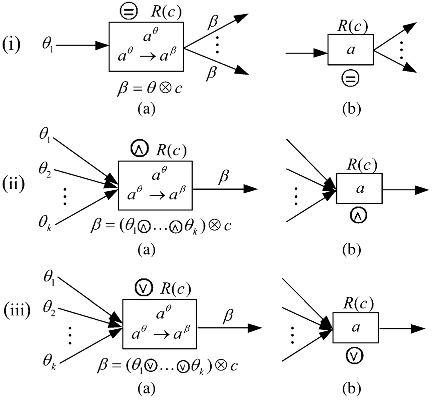




Did you find this useful? Give us your feedback


























152 citations
128 citations
121 citations
118 citations
...diagnosis of electric power systems [33] and combinatorial...
[...]
108 citations
...SN P systems have been reported as powerful computing models, such as generating sets of natural numbers [5–9], generating string languages [10–12], and have been used to solve reallife problems, such as using fuzzy reasoning SN P system for fault diagnosis [13,14], weighted fuzzy spiking neural P systems for knowledge representation [15], using fuzzy reasoning SN P systems for fault diagnosis of electric power systems [16], using SN P systems for approximately solving combinatorial optimization...
[...]
2,327 citations
...[24] G. Păun, M. J. Pérez-Jiménez, and G. Rozenberg, “Spike train in spiking neural P systems,” Int....
[...]
...[23] M. Ionescu, G. Păun, and T. Yokomori, “Spiking neural P systems,” Fund....
[...]
...Păun, “Spiking neural P systems: An improved normal form,” Theor....
[...]
...As a newly attractive research field of computer science, membrane computing, formally introduced by Păun [22], aims at abstracting computing models from the structure and the functioning of living cells, as well as from the way that cells are organized in tissues or higher order structures....
[...]
...[22] G. Păun, “Computing with membranes,” J. Comput....
[...]
589 citations
349 citations
...In recent decades, fault diagnosis has been implemented by various approaches, such as expert systems (ES) [1], [2], fuzzy logic (FL) [3]–[7], artificial neural networks (ANNs) [8], [9], Petri nets (PNs) [4], [5], [10], Bayesian networks (BNs) [11], [12], multiagent systems (MAS) [13], [14], optimization methods (OM) [15]–[17], cause-effect networks (CE-Nets) [6], [7], [18], and information theory (IT) [19], [20]....
[...]
284 citations
...Recently,SNPsystemshavebecomea hot topic inmembrane computing [24]–[30]....
[...]
247 citations
...In recent decades, fault diagnosis has been implemented by various approaches, such as expert systems (ES) [1], [2], fuzzy logic (FL) [3]–[7], artificial neural networks (ANNs) [8], [9], Petri nets (PNs) [4], [5], [10], Bayesian networks (BNs) [11], [12], multiagent systems (MAS) [13], [14], optimization methods (OM) [15]–[17], cause-effect networks (CE-Nets) [6], [7], [18], and information theory (IT) [19], [20]....
[...]
...Fault diagnosis models based on BNs are intuitive and can find relationships of causality between data, but it is difficult for these methods to obtain accurate prior probabilities and model complex power grid [12], [20]....
[...]
Future work will focus on verifying the performance superiority of FDSNP, compared with other diagnosis methods, by using performance metrics including diagnosis time, fault section misinformation rate, fault section missing rate and computational complexity. The authors would like to thank the Editor-in-Chief, Prof. A. Conejo, the editors, and the anonymous reviewers for their insightful comments and suggestions which greatly helped in improving the quality of this paper.
Four diagnosis methods, fuzzy logic (FL) [3], fuzzy Petri nets (FPN) [4], genetic algorithm-tabu search (GATS) [15], and genetic algorithm (GA) [17], are used as benchmarks to perform comparative experiments.
Due to the uncertainty of the knowledge of experts and senior dispatchers, the authors use linguistic terms to describe certainty factors.
The authors suggest network topology analysis because it decreases the number of candidate diagnosing areas and reduce the subsequent computational workload [10].
He has published thirteen books in computer science and mathematics, and over 250 scientific papers in international journals (collaborating with researchers worldwide).
In an FRSN P system, the pulse value contained in each neuron is not the number of spikes represented by a real number, but a trapezoidal fuzzy number in [0, 1], which can be interpreted as the potential value of spikes contained in neuron .
this method can be used for large-scale power transmission networks because the complexity of the fault diagnosis models based on FRSN P systems does not increase sharply and quickly with the scale of networks.
The process of this rule type modeled by using one FRSN P system is shown in Fig. 10, where (a), (b), and (c) represent spike being transmitted from input neuron to output neurons.